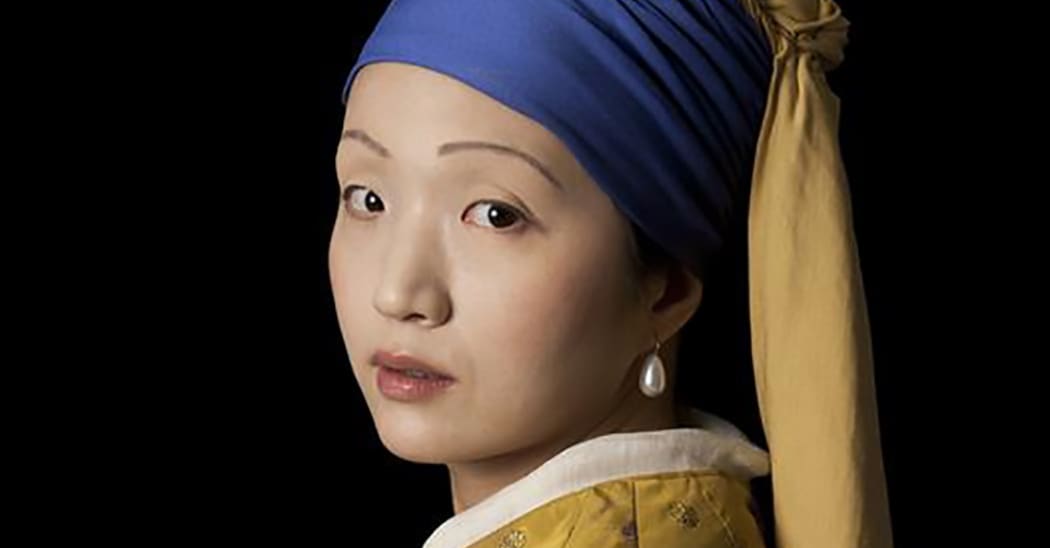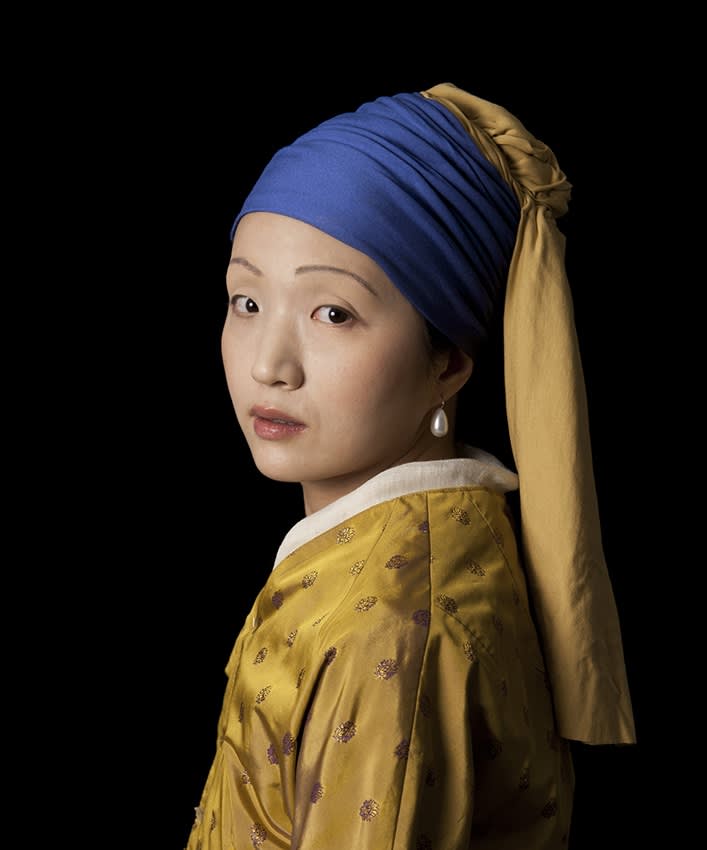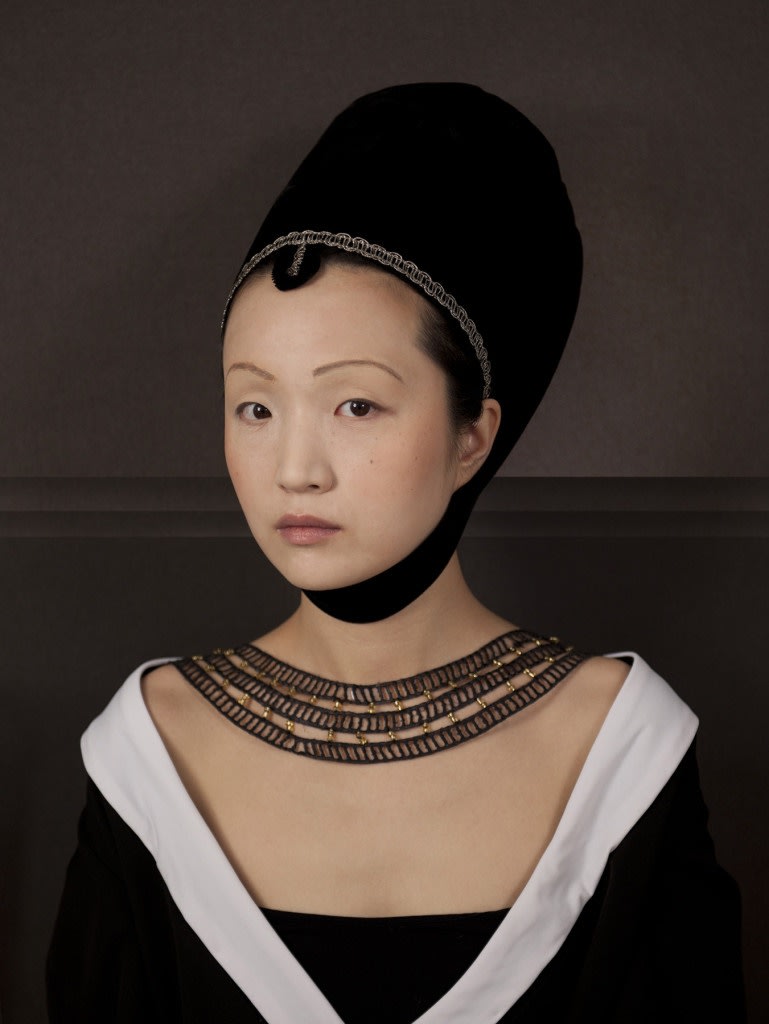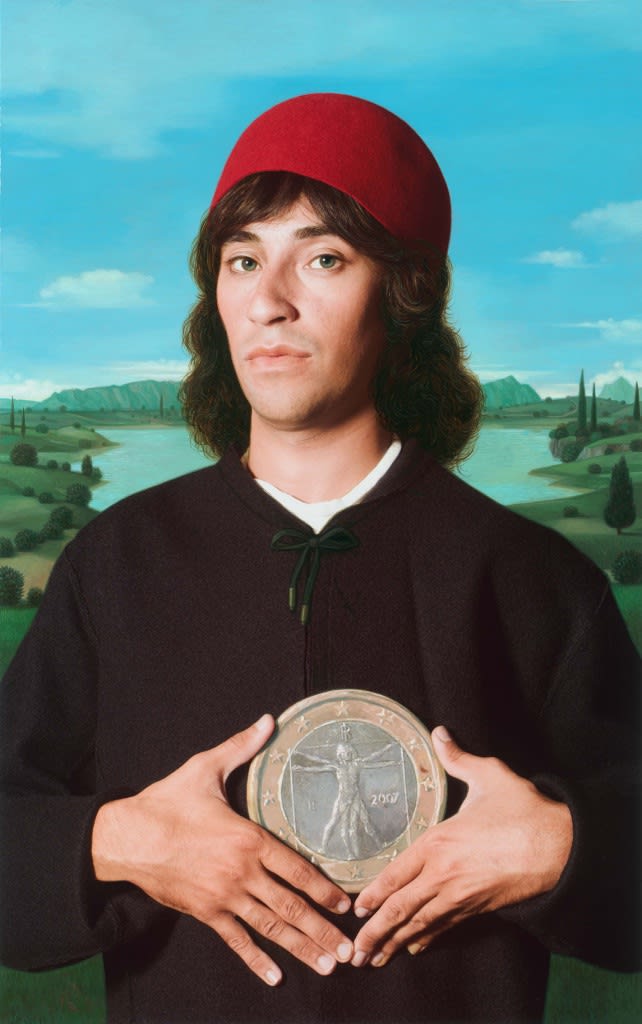
Humankind has created portraits since its earliest days. (1) Portraiture took a large leap with the development of photography in the nineteenth century. We are intrigued with facial expressions whether looking at an image of a child, adolescent or adult. Consciously or subconsciously we give each part of the face close inspection looking for insight into the subject’s personality: their disposition, motivations, intentions. Examining photographic portraits has been a way we practice “critical thinking about identities, how images relate to social, historical and cultural contexts and how ideas, feelings and meanings are conveyed through portrait photography and ultimately how they shape our history”. (2)
Why do we take photographic portraits of ourselves and other people? Cynthia Freeland, a writer and Professor of Philosophy expressed it very well: “It is simply a fact about humans that we are visual animals with a strong interest in identifying and re-identifying the faces of others. This is so important that a part of our brains is actually hard-wired for the task. And other brain parts are geared toward recognizing the facial expression of emotions. So it should not be surprising that portraits interest us. Even if we do not already know the person pictured in a portrait, their image presents us with a distinct, knowable individual, a face which we can begin to read and derive insights about…”. (3)
What does an image convey about a person? Its interesting that some portraits may be timeless. The unfortunate fact with a portrait is it freezes a moment in time. The portrait captures a past and a present time. A life captured in a portrait is only part of an on-going story. “Our lives seem more like soap operas: they might have intermittent episodes with closure, but there is generally no larger kind of closure.” (4) A great example of this is Nicholas Nixon’s series of the Brown Sisters. (5) Nixon makes an image one time a year, and has for the last four decades of these four sisters. (6) In a portrait there is a balance between the external self and the internal self. Its the tension of whether a photographer can extract and pull into view a person’s internal self or whether the capture is a “posed” self. The posed self is where the subject of the portrait only lets us see that part of their image they want us to see. Its not that the subject wins and the photographer loses. Its just that the viewer can judge who prevails in the tug-of-war between the photographer and the individual subject’s willingness to share themselves and who they are – really. (7) Richard Avedon was quoted as saying: ‘ A photographic portrait is a picture of someone who knows he’s being photographed, and what he does with this knowledge is as much part of the photograph as what he is wearing or how he looks”. (8)
Whether a portrait is just the face, the head and shoulders, two-thirds of the body or the entire person, the portraitist is making (or taking) a statement about (or from) that person. August Sander (1876-1964) became a very well known German portrait photographer who took images with all compositional settings. (9) Sander “is best known for his portraits, as exemplified by his series People of the 20th Century. In this series, he aims to show a cross-section of society during the Weimar Republic. The series is divided into seven sections: The Farmer, The Skilled Tradesman, Woman, Classes and Professions, The Artists, The City, and The Last People (homeless persons, veterans, etc.).” (10) Another photographer who made portraits of a group of people as an investigation of their ethnic character was Edward S. Curtis (1865-1952), an American ethnologist and photographer of the American West and of Native American peoples. (11) “He took over 40,000 photographic images from over 80 tribes. He recorded tribal lore and history, and he described traditional foods, housing, garments, recreation, ceremonies, and funeral customs.” (12) In making an indelible mark on fashion photography, Richard Avedon’s portraiture also “chronicled a growing sense of disillusionment about the possibilities of American life and culture, … From the start, his portraits seemed intent on pecking away the bright sheen of celebrity to reveal the ordinary, often insecure human being underneath, but in the 1970’s they became focused on the trials of aging and death.” (13) These traditional portraits capture, whether purposely or by subsequent reflection, many aspects of the human psyche and story of their time.
In a creative twist, two contemporary photographers, Elizabeth Kleinveld and Epaul Julien, (14) also known together as “E2”, have teamed up to revisit and reinterpret portraits, originally done not as photographs but as paintings from a much earlier time period. E2 selected these images to reenact, to bring forward in time, to make them relevant to issues of today they want the viewer to confront. In their series “In Empathy We Trust”, the two artists “present photographic versions of paintings from art history, beginning with the Flemish Primitives and spanning nearly 600 years. With sitters enacting varied representations of, amongst others, race and sexual orientation, we remade works by artists such as van Eyck, Rafael, Velázquez, Rembrandt, Vermeer, Fragonard, and Manet. … to adapt them to our age and thereby show their universal core. With all the possibilities … we re-imagined these paintings.” (15)
Johannes Vermeer (1632-1675) painted in a Baroque style during what was called the Dutch “Golden Age” of painting. (16) During the Baroque period, the use of light, and “Chiaroscuro”, were influenced by the Rembrandt style of painting. The use of a similar lighting technique in portraiture by photographers today is referred to as “Broad lighting”. (17) This is even more evident when one looks at the original painting. The Baroque period spanned from about 1600 to the early 1700s. Even as a painting, Vermeer’s work had a tangible connection to photography, “To create the astounding effects of light and shadow, it is believed that Vermeer used the camera obscura – a box with a hole with a lens in it. The inside of the box would be painted white and using a series of lenses and mirrors it would reflect the outside image within. This would intensify the light and shadows of the reflection, allowing the artist to see finer detail of light and shadow on surfaces and objects.” (18) Kleinveld and Julien wrote about this image: “Johannes Vermeer’s Girl with a Pearl Earring is one of his most well known paintings, yet we do not know the identity of the sitter. It was created at a time in which Vermeer’s contemporaries concentrated on officially commissioned portraits, but this work wasn’t a commission. … Vermeer has captured the sitter’s youth and seeming shyness or uncertainty in an unforgettable manner. With wide dark eyes, slightly parted lips, and light shining on her face, the girl mesmerizes us with her gaze and immediately we are drawn in. What adds mystery to the piece is that in the seventeenth century, the turban she is wearing would have been seen as a very exotic accessory. With that as the starting point, our remake of Girl with a Pearl Earring shows someone from a far more distant culture than would have been possible during Vermeer’s time. We asked Chinese artist Ran Zhang to be the sitter. Like in the original, we were intrigued by Zhang’s penetrating inquisitive look, a look that mesmerized us as well. Vermeer’s masterpiece is so universal that we were able to use a modern woman from another continent as the sitter without changing the essence of the work… .” (19)

The stare directed at the viewer, and the facial expression in a portrait, in some mystical primordial instinctive way forces a viewer to connect to the image. The painter Petrus Christus (1444-1475) of the Netherlands caught that same look. In the “Portrait of a Young Woman” (20) E2 wrote that “ … Christus’ portraits show the eyes of the sitter looking directly at the viewer. The difference lies in the attention Petrus Christus gives to the space that surrounds the sitter, which add depth to his works. The element that makes Portrait of a Young Lady so compelling is the use of shadows on the right, giving the viewer a feeling of being part of the scene. While we took this traditional Flemish Primitive and remade it with someone from another continent, the subtle tension between the serene pose and intense gaze of the young woman is still present. We were amazed to see how well she was able to exude the same presence as the original sitter, more than five hundred years after this portrait was made… .” (21) The photographers stayed true to the style of Christus in providing us a figure with beautiful detail against a flat neutral background, though with a little less “broad lighting” or Rembrandt style shadow, on the right side of the face that was in the original. That same powerful technique is evident in the work of photographers today. Sally Mann captured that look of defiance and challenge in her daughter Virginia’s eyes in the well-known image “Candy Cigarette” (1989). (22) Mann also captured that same engagement in the cover image to her book “Immediate Family” of “Emmett, Jessie, and Virginia (1989)”. (23)

The setting or background in the image can also impact how we connect and what information, sense of place, time and emotion is extracted from the portrait. Sandro Botticelli (1445-1510) was an early Renaissance painter. “The forms in his paintings are defined with a line that is at once incisive and flowing, and there is a growing ability to suggest the character and even the mood of the figures by action, pose, and facial expression.” (24) These techniques from the early painters are not lost on today’s contemporary photographers. There are hints about many things that may indicate time, place, mood or any other pieces of information that the photographer uses to inform us about that person. E2 is also well aware that in making a portrait, what items or surroundings are in place tell part of a story that facial expressions alone do not convey. (25) In describing the Botticelli image, they commented: “The medal that Botticelli depicts is of Cosimo the Elder, who is considered the founder of the ruling family of Florence, the Medici. The young man who holds the medal exudes a vague sadness, which was characteristic of Florentine male portraits at that time. When we shot this photograph in 2012, the euro-crisis was coming to a head. A great tension had developed between the southern countries in the Eurozone and the northern ones, rooted not only in economics but also with xenophobic undercurrents. At that time, there was a very real possibility that these tensions could end up destabilizing the currency. Our response was to take the Italian Euro with da Vinci’s famous work on it instead of the portrait of Cosimo. Botticelli might not have been so fond of our move for da Vinci was his rival and made no bones about the fact that he found Botticelli’s landscapes “dismal”.” (26)

Artists will continue to capture the images of people using lessons from the past, and reflect us, our portraits, illuminated, or masked, by current social, environmental and technological trends. “New methodologies for capturing, combining, altering and creating images present a sea of opportunity for innovation and also some new social dilemmas as using technology to alter images creating naturally unachievable images of beauty.” (27) Regardless, for the person, or persons, captured by the camera, their portrait will carry a message of their times and give them an immortality so long as their image can be seen.
Please feel free to comment and to share this and the other Commentaries of Foto Relevance with others who may be interested.
Notes:
- See a short video created by PBS Arts Digital Studios and D.L.Cade, “Exploring the Art of Portrait Photography and the Role of the Portrait Today”, August 8, 2013. http://petapixel.com/2013/08/08/exploring-the-art-of-portrait-photography-and-the-role-of-the-portrait-today/
- “Portrait Photography: From the Victorians to the present day – Information and Activities for Secondary Teachers of Art and Photography”, The National Portrait Gallery. http://www.npg.org.uk/assets/files/pdf/learning/schools_wide_angle.pdf
- from “Portraits & Persons: A Philosophical Inquiry” by Cynthia Freeland , Professor of Philosophy, University of Houston, Texas. Oxford University Press, 2010.
- Op. Cit., “Portraits & Persons”. Freeland.
- Nicholas Nixon is a portrait and documentary photographer. https://en.wikipedia.org/wiki/Nicholas_Nixon
- The images can be seen at: http://www.nytimes.com/interactive/2014/10/03/magazine/01-brown-sisters-forty-years.html
- For further expressions on this, read “Camera Lucida: Reflections on Photography” by Roland Barthes. Hill and Wang. 1980.
- A very well written obituary in the New York Times, October 2, 2004, “Richard Avedon, The Eye of Fashion, Dies at 81”, by Andy Grunberg. http://www.nytimes.com/2004/10/02/obituaries/richard-avedon-the-eye-of-fashion-dies-at-81.html
- The Museum of Modern Art holds a large collection of images by August Sander available to be seen in this link: http://www.moma.org/collection/artists/5145
- https://en.wikipedia.org/wiki/August_Sander Unfortunately, many of his negatives were destroyed during and shortly after World War II.
- A collection of Edward Curtis images can be seen at http://curtis.library.northwestern.edu/curtis/toc.cgi
- https://en.wikipedia.org/wiki/Edward_S._Curtis
- op cit. New York Times, October 2, 2004, “Richard Avedon, The Eye of Fashion, Dies at 81”, by Andy Grunberg.
- Elizabeth Kleinveld, formerly of New Orleans, Louisiana now living in the Netherlands, and Epaul Julien, of New Orleans worked together on this and other photographic projects.
- from the Artist Statement for “In Empathy We Trust” by Elizabeth Kleinveld and EPaul Julien, Princess Books, Images created 2011-2014.
- “Portraiture History and Evolution” by Elena Koudreiko, Published by “Photography and Art”, December 13, 2013. http://kouku.co.uk/portraiture-history-evolution-recent-art-photography/
- “Broad Lighting” -This lets light fall on the narrow side of the face leaving a shadow on the broad side of the face, which is facing the camera as defined by Rob Gray at www.picturecorrect.com/tips/short-lighting-photography/
- Artble website: http://www.artble.com/artists/johannes_vermeer/more_information/style_and_technique
- Op. Cit. “In Empathy We Trust”. Image 10, Page 24 of 48.
- See the original painting in the Wikipedia article at : https://en.wikipedia.org/wiki/Portrait_of_a_Young_Girl_(Christus) . “Portrait of a Young Girl is a small oil-on-oak panel painting by the Early Netherlandish painter Petrus Christus. It was completed towards the end of his life, between 1465 and 1470,[… It marks a major stylistic advance in contemporary portraiture; the girl is set in an airy, three-dimensional, realistic setting, and stares out at the viewer with a complicated expression that is reserved, yet intelligent and alert.“
- Op. Cit., “In Empathy We Trust”. Image 2, Page 8 of 48.
- “Immediate Family” by Sally Mann. Aperture, 1992.
- Op. CIt., “Immediate Family”.
- Article in Encyclopedia Britannica by Ronald W. Lightbrown. http://www.britannica.com/biography/Sandro-Botticelli
- See the original image at: https://en.wikipedia.org/wiki/Portrait_of_a_Man_with_a_Medal_of_Cosimo_the_Elder
and the original landscape background. - Op. CIt., “In Empathy We Trust”, Image 3, Page 10 of 48.
- Op. Cit., “Portraiture History and Evolution” by Elena Koudreiko. The article “Portraiture History and Evolution” by Elena Koudreiko is an excellent and thoughtful journey through the the rest of the history of art and its influences on portrait photography. Following the Renaissance and Baroque period images from which the E2 portraits are appropriated, we find future photographers adapting lessons form the Rococo Period’s use of “Paramount or Butterfly lighting”, a strong frontal fighting of faces against a darker background. We then see the influences of Neoclassicism and Romanticism on portrait photographers Julia Margaret Cameron (1815-1879). Later comes along Alfred Stieglitz (1864-1946) that sets an entirely new standard in photography responding to trends in other art forms and demanding that the photograph be treated as art itself. Photographic portraiture is then redefined with the fashion and glamour photography in the 1950s and 1960s. The 1970s and photographers like Richard Alvedon open the door to experimentation and performance to express identity of who we are, or think we are, coming almost full circle to artist like Rineke Dijkstra in her straight literal portraits. Then there is the advent of photo realism and such artist/photographers as Chuck Close that challenge the boundary between a captured image and a created image. Koudreiko’s essay captures that fascinating relationship of the influences back and forth between photography and other art forms.